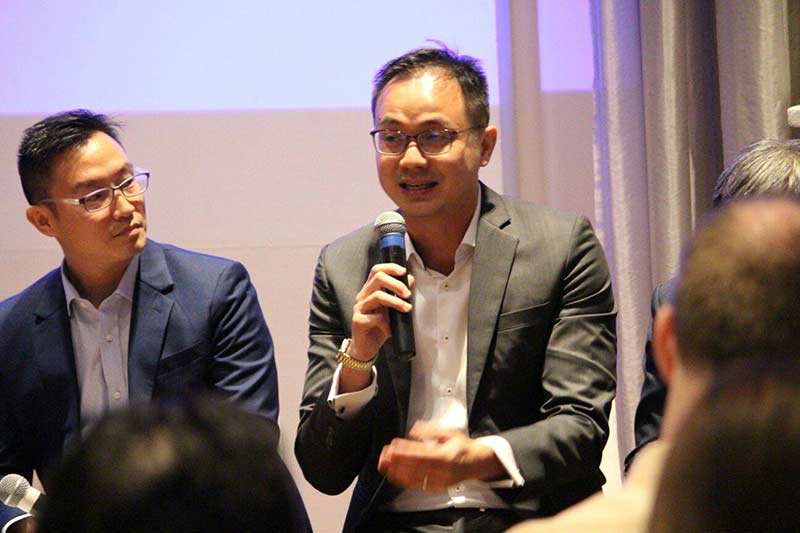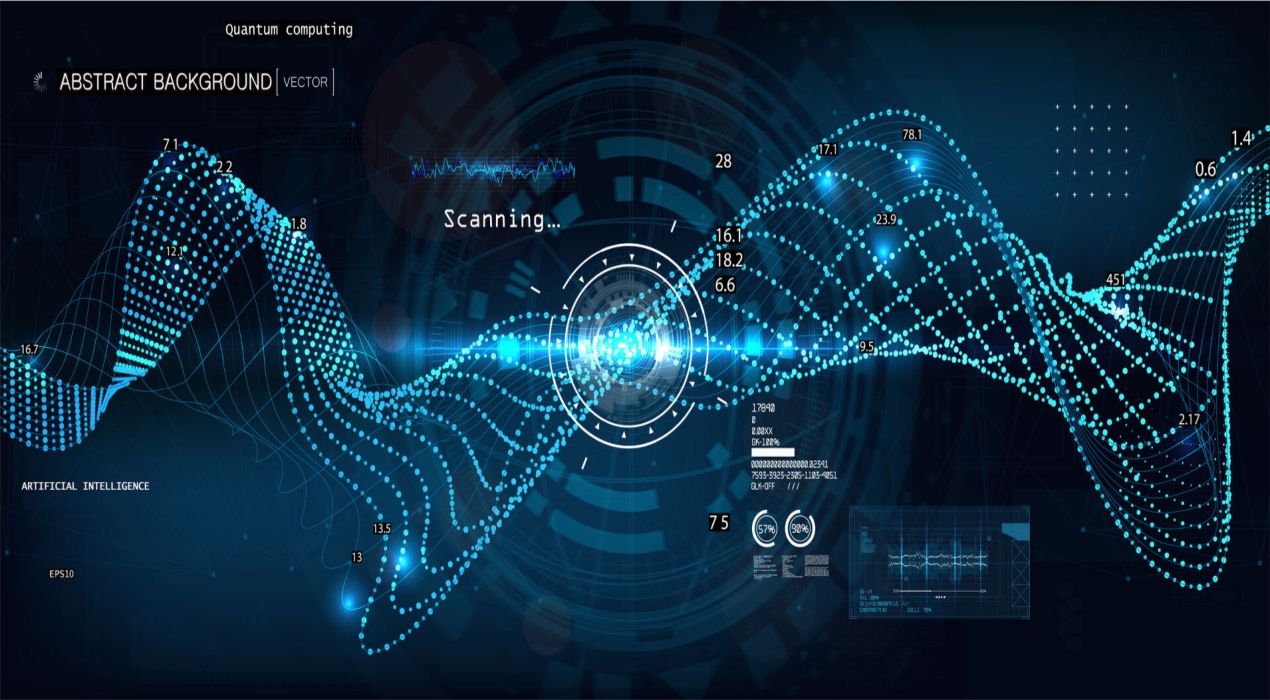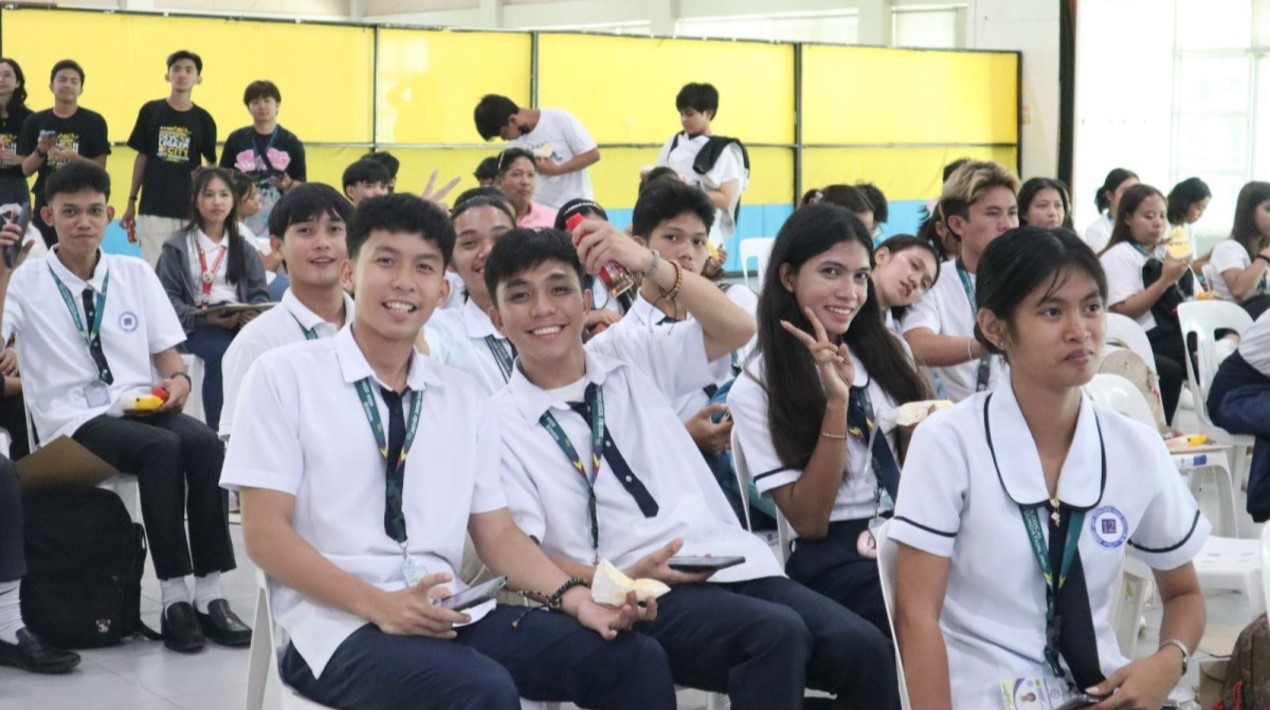
By Priyankar Bhunia and Nicky Lung
Digital technologies are impacting every aspect
of our lives today. Great optimism regarding potential benefits exists alongside
escalating anxiety over the dark side of technology.
A new book written by experts in Singapore argues
that how we prepare for the future should not be based on a dystopian or
utopian view of technology’s influence on society. It takes a more balanced
view that technology can be helpful or harmful in different contexts.
The book explores four different future
scenarios in the areas of work, education and healthcare. For example, in the
area of work, the vertical axis ranges from rapid to incremental technological
disruption, while the horizontal axis moves from many people struggling to many
people thriving, creating four distinct visions of the future.

In view of these scenarios, the authors try to provide
practical answers to questions like: “How can people thrive as their lives are
disrupted and transformed?” “Will jobs be created or destroyed?” “Will digital
divides narrow or widen in education and healthcare?”
Published by World Scientific, Living
Digital 2040: Future of Work, Education, and Healthcare is
authored by Mr Poon
King Wang (Director, Lee Kuan Yew Centre for Innovative Cities or LKYCIC, SUTD), Dr Hyowon Lee (Assistant Professor,
Information Systems Technology and Design, SUTD), Dr Lim Wee Kiat (Research
Fellow, Asian Business Case Centre, NTU), Dr Mohan Rajesh Elara (Assistant
Professor, Engineering Product Development, SUTD), Dr Youngjin (Marie) Chae (Research
Fellow, LKYCIC), Ms Gayathri Balasubramanian (Research Assistant, LKYCIC), Mr
Aaron Yong Wai Keet (Senior Industrial Designer, LKYCIC), and Mr Raymond Yeong
Wei Wen (Research Officer, LKYCIC).
The multi-disciplinary team has experience and
expertise in design, sociology, human-computer interaction, human-robotics
interaction, analytics, wearables, IT in organisations, fashion design,
industrial design, telecommunications, banking, consumer products, and public
policy.
The team adopted a qualitative approach for the
project, using in-depth interviews, participant observation and group
discussions. During the interviews, the team ensured that while focusing on
specific domains and sub-areas, different domains were connected to each other
at various points.
OpenGov had the
opportunity to speak to Mr Poon (top right), the Principal Investigator for the project and Dr Lim (top left), a Co-Principal
Investigator, about LKYCIC, the origins of the project and the findings of the
study.
LKYCIC was established
in September 2012, as a research
institute in the Singapore University of
Technology and Design (SUTD). Considering that cities are
becoming the dominant player for implementation of solutions and improving
people’s lives, the
Centre seeks to stimulate thinking and research on the critical issues of
cities and urbanisation and explore the integrated use of technology, design
and policy to provide urban solutions.
Like SUTD itself, LKYCIC adopts a multi-disciplinary approach, because the issues in cities are
multi-faceted.
One of the main objectives of the Centre
is the sharing of knowledge and experience. Mr Poon said, “As
the rest of the world is urbanising, we realise that Singapore’s experience is
potentially very useful as a reference, not necessarily a template, for other
cities. Not only should we consolidate what we know and have learnt about
Singapore, we should also be learning from other countries and sharing our
learning with other countries, so that we form a global learning community.”
Idea behind the project
This new book is an outcome of a project under
the Land and Liveability National Innovation Challenge (L2NIC)
funded by the National Research Foundation (NRF) and the Ministry of National
Development. The aim is to study the future of cities in 2040 and its
implications for Singapore.
Under
the L2NIC, there are 7 projects, covering future economy, future diversity,
future urban forms, future transportation, sustainable futures, big data and
living with technology. All these projects are expected
to develop understanding of how trends are evolving and what Singapore should
do to prepare for the future.
But why 2040? Mr Poon explained, “It allows
us to think in a way that is not overly constrained by problems today. It is a
useful intellectual mechanism to transcend some of the constraints that might
otherwise hold back some of our imagination.”
This specific project is on living with
technology. With the idea that technology is a major disruptive force to
society, the researchers examined how technology is evolving and its impact on
how we live. They focused on three critical social institutions: work,
education and healthcare, because these are areas all of us will inevitably experience first-hand at various
points of our lives.
Pace
of disruption
While talking about disruption, Mr Poon
emphasised that disruption does not
hit us overnight and blind side us.
To factor in the pace of disruption, ‘time’
is included in the conceptual equation presented in the book for the drivers of
change:

Many of today’s technologies that are
deemed disruptive have been around for some time, at least a few years. For
example, artificial intelligence (AI) is in its third or fourth wave. The
building blocks that underpin big data have also been around for a few years.
Dr Lim brought up the example of chatbots.
The Singapore Government is using a number of chatbot applications – the
whole-of-government virtual assistant Jamie
and Joanne
in the Inland Revenue Authority of Singapore (IRAS). But 20 years ago Microsoft
Word already had an animated paper clip Office Assistant performing similar
functions, though its interface was not as user-friendly and its abilities were
a lot cruder.
Cars have followed a similar development
path. Today we are talking about driverless cars. The various devices and
functions in cars are improving gradually, such as the shift from manual gears
to automatic. More and more functions have been computerised.
Dr Lim said, “There are a lot of micro changes
that accumulate, and it comes to a point where we realise it’s a big change.
Likewise, technology is creeping upon us, slowly but surely.”
“To us, the biggest disruption comes from
the inability to track and the inability to tackle – the failure to see what is
coming and even if you see it, the inability to act on it,” said Mr Poon.
Tracking
changes
But often individuals, societies and
governments tend to be aware of the technological change only when it has
reached a certain threshold or tipping point. We asked how the government and
society can have long-term thinking at a stage when changes might not be easily
observable.
New tools are required to track technology
trends and development. Part of the project was to determine and explore what
could serve as practical tracking tools.
For instance, the team found ‘tasks’ to be the
appropriate tracking tool for work. Academic studies from economists recognise
that many of the changes we see in the labour force and markets are related to
how tasks have been configurated by technology, both within the job and
globally, as a result of globalisation.
A report titled
‘Artificial
Intelligence and Life in 2030’ from Stanford University which looked at
what AI can do and its impact on jobs, found that what we have now is narrow
AI, i.e. specialised AI which can only perform certain tasks. So, at least as
of now, AI will take over jobs task by task.
“As such, having
task databases or task-based strateies give us a better level of accuracy on
predicting the general direction of technology development. It gives you
perhaps a couple more years of lead time to think of what to do in preparation for
the future. We think that’s what governments and businesses increasingly have
to do,” said Mr Poon.
The UK and US
are already using or exploring task-based approaches. The book recommends a
task-based analysis of the city’s economy and the creation of an O*NET[1] type database to help
government agencies, companies and citizens master tasks.

Credit: World Scientific
Motivating individuals
But how can individuals be motivated to
prepare themselves for all these changes caused by technology?
Mr Poon said that the same set of tracking
tools can be used to empower individuals. The team is now building a prototype
that can work off a laptop to help individuals plan their future. Being able to
see and plan one’s own future is expected to give them the confidence to make
changes.
The other aspect of this is
socio-psychological studies to help individuals be less fearful about change
and even job loss. The team is running a couple of such studies.
“One of the ideas related to the book is
that while most people focus on job loss as the major social disruption in the
future, there is little call for companies to improve their CSR practices to
focus more on job creation. Our assumption is that if we can take away some of
the fear, people will be more accepting to technology as they see the benefit
of it,” Mr Poon said.
The third approach is to cultivate the
willingness to be resilient in people, from when they are young. This enables
people to see what they can do, accept change, and use technology to their
advantage.
But this raises another question. Those who
are more adaptive to learning new technologies and open to changes, or the
individuals who are labelled digital natives, tend to be the younger
generation. The young tend to be less risk averse. What about the older
generation, especially as Singapore is facing the challenge of an ageing
population?
Dr Lim answered,
“We asked ourselves a similar question, when 2040 comes and we get older, will
we be equally fearful and risk averse as some of today’s elderly? We think
there is a generational and cohort difference. The population profile is
qualitatively different from the population from the past decades. Elderly in
the future will be considered almost digital native. It might take us some
effort to pick up new skills, but the change would not be as abrupt.”
Mr Poon also
noted that sometimes we underestimate what the comparatively older generations
can do. If you look at the augmented reality game, Pokemon Go, no generation
difference is visible in its avid fanbase. Whether it is the Government or a
business, the key question would then be whether they have created enough
motivation for people to change.
Another point is
that technology has to be designed in a way that is easy to use and inclusive.
This involves what our interviewees call universal design[2].
One of the themes of the book is the need
for collective effort from the society to deal with challenges. But for
collective capacity, changes have to be inclusive.
Mr Poon explained, “Different levels of
skills and abilities have to be accounted for, the design of solutions must
suit all different levels of skills and abilities, solutions and policy must
give a sense of motivation and the understanding that these capabilities do not
stay static.”
An important trend discovered in the study
is that instead of governments and large companies leading innovation,
individuals are now empowered to start something new. In this digital age,
innovation can come from anywhere. The question is how to create an environment
to encourage it to happen.
Next
steps
The team is continuing research and
conducting a survey on how people perceive change in the context of smart
cities and digital economies
The researchers also continue to examine
what the future of work means and understand the psyche of people who are
affected.
On the implementation side, schools have
approached the research team to explore further the ideas in the future of
education. Companies are also interested in the task-based approach. On a wider
scale, the team is building communities, be it communities of interest or of practice,
to further discuss the project.
[1] The O*NET database, containing hundreds of
standardised and occupation-specific descriptors on almost 1,000 occupations
covering the entire U.S. economy. It was developed under the sponsorship
of the U.S. Department of
Labor/Employment and Training Administration through a grant to the
North Carolina Department of Commerce.
[2] Universal Design is the design and
composition of an environment so that it can be accessed, understood and used
to the greatest extent possible by all people regardless of their age, size, ability
or disability.
















